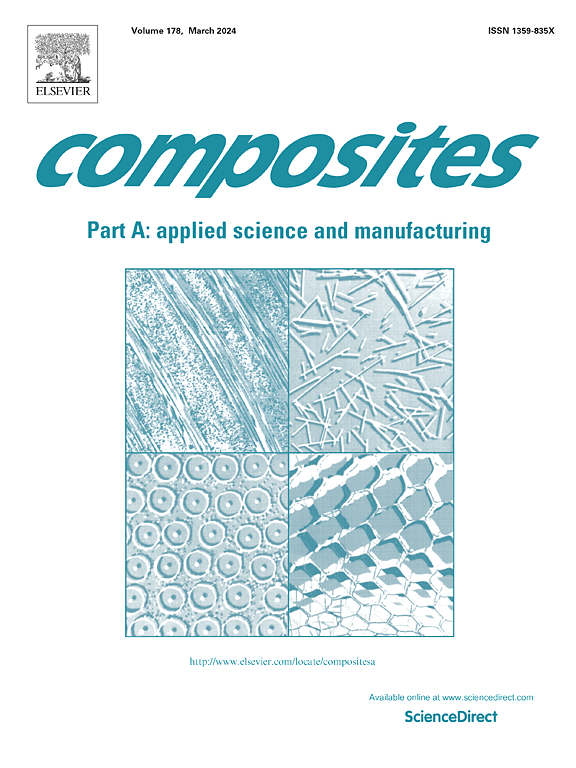A multistage modulated smart window based on fluorinated polymer/ liquid crystal composites with passive radiative cooling characteristics
IF 8.1
2区 材料科学
Q1 ENGINEERING, MANUFACTURING
Composites Part A: Applied Science and Manufacturing
Pub Date : 2025-04-23
DOI:10.1016/j.compositesa.2025.108980
引用次数: 0
Abstract
Passive radiative cooling (PRC) smart windows have been studied in the energy-saving field due to their superior cooling effect. However, developing low-cost interfacial microstructures that can be manufactured on a large scale and achieving effective radiative cooling remains a challenge. Herein, a PRC smart window is proposed based on Polymer Dispersed Liquid Crystal (PDLC), which possess rich phase-separated structures. Results demonstrate that fluorinated crosslinkers and acrylate monomers can significantly improve electro-optical properties. The PDLC smart window can dynamically regulate the transmittance of near-infrared (NIR) bands, resulting in a maximum temperature difference of 4.12 °C compared to the control sample. Meanwhile, the high emissivity in mid-infrared band enables it to attain a theoretical maximum daytime cooling power of 73.38 W/m2 and a nighttime cooling rate of 122.84 W/m2. Therefore, it is anticipated that our research findings can provide new ideas for the development of PRC and energy-saving materials.

一种基于氟化聚合物/液晶复合材料的多级调制智能窗,具有被动辐射冷却特性
被动辐射制冷智能窗因其优越的制冷效果而成为节能领域的研究热点。然而,开发可以大规模制造的低成本界面微结构并实现有效的辐射冷却仍然是一个挑战。本文提出了一种基于聚合物分散液晶(PDLC)的PRC智能窗口,该窗口具有丰富的相分离结构。结果表明,氟化交联剂和丙烯酸酯单体能显著改善材料的电光性能。PDLC智能窗口可以动态调节近红外(NIR)波段的透射率,与对照样品相比,最大温差为4.12℃。同时,中红外波段的高发射率使其理论最大日间冷却功率为73.38 W/m2,夜间冷却速率为122.84 W/m2。因此,我们期望我们的研究成果可以为PRC和节能材料的发展提供新的思路。
本文章由计算机程序翻译,如有差异,请以英文原文为准。
求助全文
约1分钟内获得全文
求助全文
来源期刊

Composites Part A: Applied Science and Manufacturing
工程技术-材料科学:复合
CiteScore
15.20
自引率
5.70%
发文量
492
审稿时长
30 days
期刊介绍:
Composites Part A: Applied Science and Manufacturing is a comprehensive journal that publishes original research papers, review articles, case studies, short communications, and letters covering various aspects of composite materials science and technology. This includes fibrous and particulate reinforcements in polymeric, metallic, and ceramic matrices, as well as 'natural' composites like wood and biological materials. The journal addresses topics such as properties, design, and manufacture of reinforcing fibers and particles, novel architectures and concepts, multifunctional composites, advancements in fabrication and processing, manufacturing science, process modeling, experimental mechanics, microstructural characterization, interfaces, prediction and measurement of mechanical, physical, and chemical behavior, and performance in service. Additionally, articles on economic and commercial aspects, design, and case studies are welcomed. All submissions undergo rigorous peer review to ensure they contribute significantly and innovatively, maintaining high standards for content and presentation. The editorial team aims to expedite the review process for prompt publication.
 求助内容:
求助内容: 应助结果提醒方式:
应助结果提醒方式:


